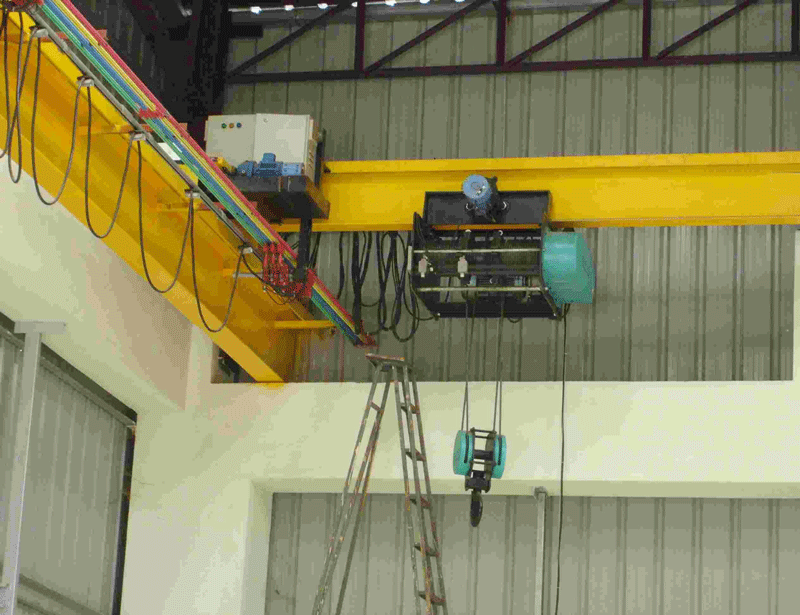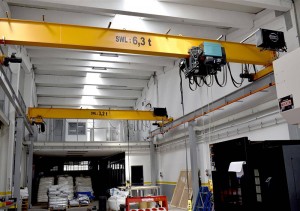
Freestanding Workstation Top Running Bridge Crane with Electric Hoist
Components and Working Principle
Bridge Structure: The bridge structure is the main framework of the crane and is usually constructed from steel beams. It spans the width of the working area and is supported by end trucks or gantry legs. The bridge structure provides a stable platform for the other components.
End Trucks: The end trucks are located at each end of the bridge structure and house the wheels or trolleys that allow the crane to move along the runway rails. The wheels are typically powered by electric motors and guided by the rails.
Runway Rails: The runway rails are fixed parallel beams installed along the length of the working area. The end trucks travel along these rails, allowing the crane to move horizontally. The rails provide stability and guide the crane’s movement.
Electric Hoist: The electric hoist is the lifting component of the crane. It is mounted on the bridge structure and consists of a motor, a gearbox, a drum, and a hook or lifting attachment. The electric motor drives the hoisting mechanism, which raises or lowers the load by winding or unwinding the wire rope or chain on the drum. The hoist is controlled by an operator using pendant controls or a remote control.
Application
Manufacturing and Production Facilities: Top running bridge cranes are often used in manufacturing plants and production facilities for the movement and lifting of heavy materials and equipment. They can be utilized in assembly lines, machine shops, and warehouses to efficiently transport components and finished products.
Construction Sites: Construction sites require the lifting and movement of heavy construction materials, such as steel beams, concrete blocks, and prefabricated structures. Top running bridge cranes with electric hoists are employed to handle these loads, facilitating construction processes and enhancing productivity.
Warehouses and Distribution Centers: In large-scale warehouses and distribution centers, top running bridge cranes are used for tasks such as loading and unloading trucks, moving pallets, and organizing inventory. They enable efficient material handling and enhance storage capacity.
Power Plants and Utilities: Power plants and utilities often rely on top running bridge cranes to handle heavy machinery components, such as generators, turbines, and transformers. These cranes assist in equipment installation, maintenance, and repair operations.







Product Process
Design and Engineering:
The design process begins with understanding the customer’s requirements and specifications.
Engineers and designers create a detailed design that includes the crane’s lifting capacity, span, height, and other relevant factors.
Structural calculations, load analysis, and safety considerations are performed to ensure the crane meets the required standards and regulations.
Fabrication:
The fabrication process involves manufacturing the various components of the crane, such as the bridge structure, end trucks, trolley, and hoist frame.
Steel beams, plates, and other materials are cut, shaped, and welded according to the design specifications.
Machining and surface treatment processes, such as grinding and painting, are carried out to achieve the desired finish and durability.
Electrical System Installation:
The electrical system components, including motor controllers, relays, limit switches, and power supply units, are installed and wired according to the electrical design.
Wiring and connections are carefully executed to ensure proper functionality and safety.
















